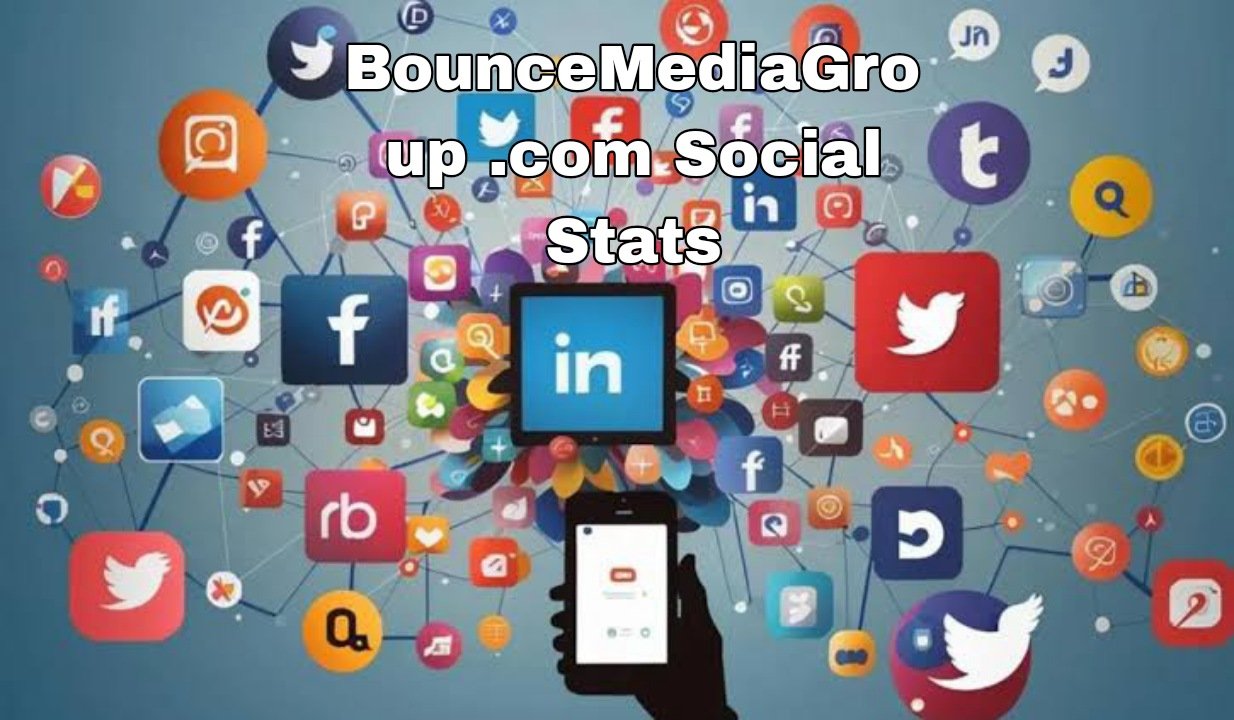In the ever-evolving digital landscape, social media has emerged as a powerful tool for businesses aiming to connect with their audience and drive growth. For companies like BounceMediaGroup.com, analyzing social stats is not just a task; it’s a strategic necessity. Understanding social media metrics can significantly impact marketing strategies, content creation, and overall brand success. This article delves into how BounceMediaGroup.com uses social stats to shape effective marketing campaigns, enhance brand presence, and overcome common challenges in the digital sphere.
Understanding Social Media Metrics
Social media metrics are quantitative measures used to evaluate the performance of social media activities. They provide insights into how content is received and interacted with by users. Key metrics include engagement rates, reach, impressions, click-through rates (CTR), and follower growth.
- Engagement Rates: This metric measures the level of interaction a post receives. It includes likes, comments, shares, and other forms of user interaction. High engagement rates typically indicate that the content resonates with the audience.
- Reach and Impressions: Reach refers to the number of unique users who see a post, while impressions measure the total number of times the post is displayed. Both metrics are crucial for understanding the visibility of content.
- Click-Through Rates (CTR): This metric evaluates how often users click on a link within a post compared to how often it is viewed. A higher CTR suggests effective content that drives user action.
- Follower Growth: Tracking the increase or decrease in followers helps gauge the effectiveness of social media strategies and content relevance.
BounceMediaGroup.com’s Social Stats To Approch
BounceMediaGroup.com employs advanced tools and techniques to analyze these social media metrics comprehensively. Their approach includes:
- Data Aggregation: Collecting data from various social media platforms to get a holistic view of performance.
- Trend Analysis: Identifying patterns and trends in social media interactions to inform future strategies.
- Competitive Benchmarking: Comparing performance metrics with competitors to gauge relative success and identify areas for improvement.
Importance and Benefits
Why Social Media Metrics Matter
Understanding social media metrics is crucial for several reasons:
- Informed Decision-Making: Metrics provide actionable insights that guide decision-making. For instance, identifying which types of content generate the most engagement can help refine content strategies.
- ROI Measurement: Metrics help measure the return on investment (ROI) of social media campaigns. By analyzing engagement and conversion rates, businesses can determine the effectiveness of their social media spending.
- Audience Insights: Social stats reveal valuable information about the audience, including demographics, preferences, and behavior. This knowledge enables businesses to tailor content and strategies to better meet audience needs.
- Performance Tracking: Regular monitoring of social media metrics helps track performance over time, allowing for adjustments and improvements to strategies as needed.
Benefits of Effective Social Media Analysis
- Enhanced Brand Awareness: By understanding which content performs best, businesses can create more impactful posts that increase brand visibility.
- Increased Engagement: Analyzing metrics helps identify the types of content that drive user interaction, leading to higher engagement rates.
- Optimized Marketing Strategies: Data-driven insights enable businesses to refine their marketing strategies, resulting in more effective campaigns.
Applications and Use Cases
Case Study 1: Successful Campaign Optimization
One example of effective social media analysis is BounceMediaGroup.com’s optimization of a product launch campaign. By analyzing engagement rates and CTR, they identified that posts featuring interactive content received higher user interaction. This insight led to a strategic shift towards more interactive posts, resulting in a 30% increase in engagement and a 20% rise in conversions.
Case Study 2: Audience Segmentation
Another application of social media metrics is audience segmentation. BounceMediaGroup.com used demographic data from social stats to segment their audience based on interests and behavior. This segmentation allowed them to tailor content more precisely, leading to a 25% increase in click-through rates and a 15% improvement in overall engagement.
Challenges and Solutions
Challenge 1: Data Overload
One common challenge in social media analysis is data overload. With vast amounts of data available, it can be overwhelming to extract meaningful insights.
Solution: To overcome this, BounceMediaGroup.com utilizes advanced analytics tools and platforms that streamline data collection and provide actionable insights. Implementing automated reporting and visualization tools can also help manage large datasets effectively.
Challenge 2: Interpreting Metrics Accurately
Another challenge is accurately interpreting metrics and drawing meaningful conclusions. Misinterpretation can lead to misguided strategies and wasted resources.
Solution: BounceMediaGroup.com addresses this by employing data analysts and social media experts who are skilled in interpreting metrics. They also rely on benchmarking and comparative analysis to validate findings and ensure accuracy.
Conclusion
In summary, social media metrics play a pivotal role in shaping effective marketing strategies. For businesses like BounceMediaGroup.com, analyzing social stats provides valuable insights into audience behavior, content performance, and overall campaign success. By leveraging these insights, businesses can enhance their brand presence, optimize their marketing efforts, and achieve their goals more effectively.




